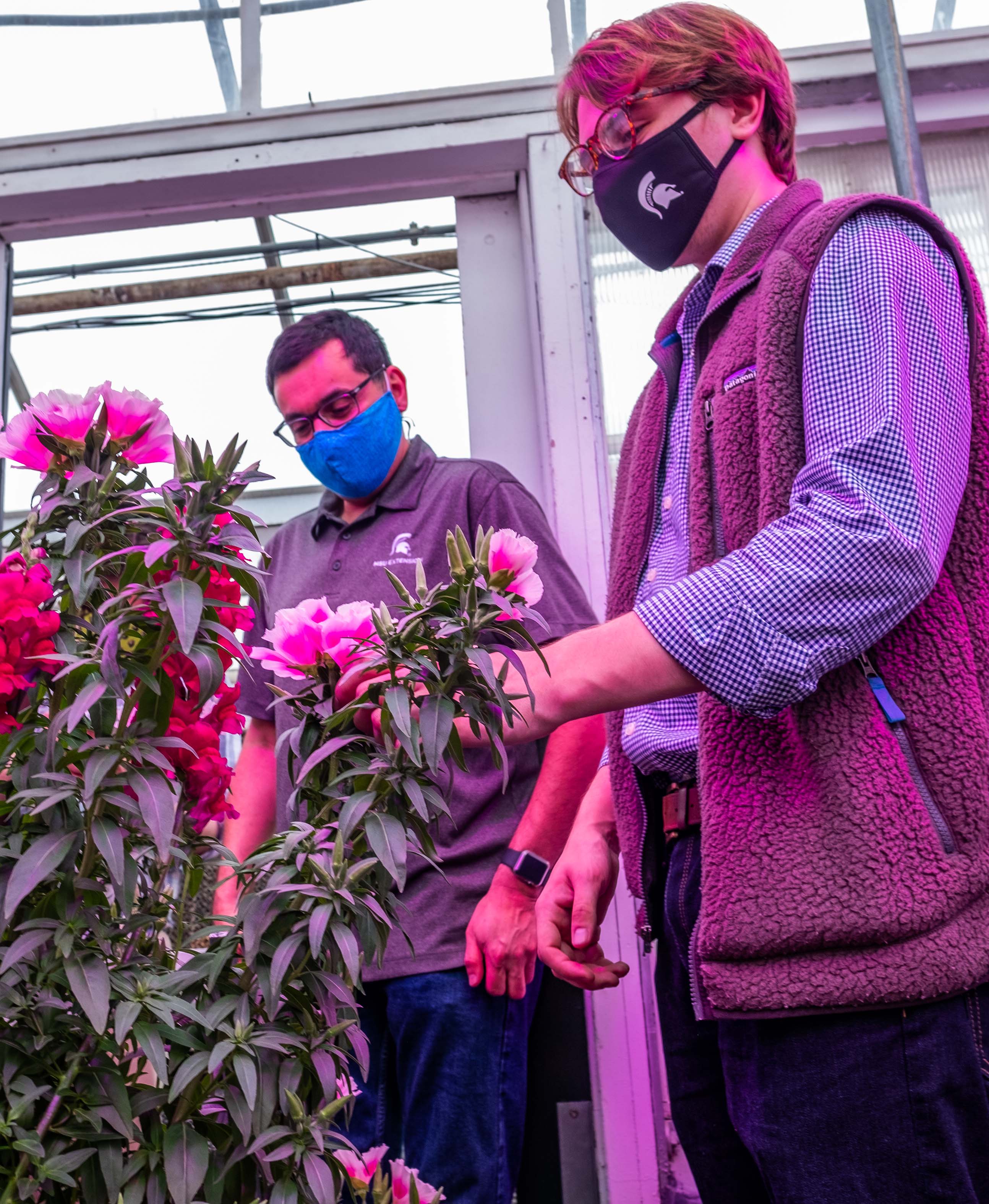"Ask the Expert" articles provide information and insights from MSU scientists, researchers and scholars about national and global issues, complex research and general-interest subjects based on their areas of academic expertise and study. They may feature historical information, background, research findings, or offer tips.
There’s never a bad time to buy cut flowers for yourself or to give them as a “just because” gift. But there are certain holidays when these blooms are especially welcome (looking at you, Valentine’s Day). It might come as a surprise, however, that the most familiar flowers you’ll find at florists, grocery stores and online are imported. About 80% of our cut roses, carnations and chrysanthemums originate outside the United States.

For those consumers that want to support local, regional or domestic cut flower growers, specialty cut flowers are the answer, say MSU floriculture experts Roberto Lopez and Caleb Spall. These flowers — mainly those that are not part of the “Big Three” mentioned earlier — can offer a wider range of colors, fragrances, textures and overall beauty.
Lopez and Spall from the College of Agriculture and Natural Resources are working to help greenhouse growers succeed in the blooming and booming specialty cut flower industry. We caught up with these two Spartan researchers to learn how we can help support local growers and make more ecofriendly choices when shopping for floral gifts.
What are specialty cut flowers?
Caleb Spall, master’s candidate and 2021 American Floral Endowment Paul Ecke, Jr. Scholar:
Traditionally, they're defined as any cut flower other than roses, carnations or chrysanthemums. It’s a pretty simple definition, but it encompasses a huge variety of fresh and dried cut flowers, woody stems and even cut foliage.
Roberto Lopez, associate professor of horticulture and extension specialist:
Roses, carnations and chrysanthemums were grown domestically in parts of the U.S. with high light intensities and moderate temperature such as in Colorado and California. But as labor, energy and greenhouse operation costs increased, the industry moved — primarily to Colombia, Ecuador and parts of Africa that have the ideal climate for year-round production. Those three crops hold up well during shipping and have a long vase-life, so production location is more flexible.
The specialty cut flower industry in the U.S. is booming, but most specialty cut flowers do not ship very well. For example, if snapdragon cut flowers are laid flat in a box, they start to defy gravity and bend upwards during transit. The resulting bent stems are then no longer considered to be marketable when they reach their destination.
Why might folks want to consider buying specialty cut flowers?
Spall: Specialty cut flowers can have so many different textures and colors and can make an arrangement even more unique and eye-catching compared to a traditional arrangement of, say, just roses.
Younger consumers are interested in native, organically grown, diverse and exciting cut flowers that are locally-sourced and grown within a certain radius of where they live. Some view traditional cut flowers as being produced thousands of miles away and having a substantial carbon footprint due to this long-distance shipping.
Where can people find specialty cut flowers?
Spall: There’s a wide variety of venues where people can purchase specialty cut flowers or cut your own at a u-cut farm, but that will vary with season. I also personally like to go to farmers’ markets in the spring and summer. You can also find the flowers year-round at florist shops and specialty markets and even supermarkets.
Locally, some examples are Stiles Pumpkin Farm and Back Road Blossoms U-Cut Flowers in Durand. I live close to the East Lansing Farmers Market, and the farmers and vendors have beautiful, locally grown arrangements and individual stems that often sell out quickly. Then Horrocks Farm Market in Lansing and Meijer locations are open year-round.
Lopez: Also, consumers can participate in CSAs, or community supported agriculture. Just to give you an example for something very local, the MSU Student Organic Farm has a CSA year-round and during the summer months they offer cut flower shares in addition to their traditional produce shares.
I would encourage people to visit the websites of the Association of Specialty Cut Flower Growers, Certified American Grown, or the Michigan Flower Growers Cooperative to find information on where to buy flowers grown in their area.
Sounds like it could be a little tricky to find specialty cut flowers from Michigan in February. Do you have any other tips that could help people make more sustainable flower choices in winter?
Lopez: One of the things I always look at when I see cut flowers in a grocery or big box store — like Costco or Trader Joe’s, for example — is the origin and verification labels. U.S. growers are proud of their products so you may see labels like “California grown” or “Certified American Grown”.
Flowers that are grown domestically or imported may have labels verifying that they are sustainably grown. You may see cut flowers labeled as certified by Veriflora, MPS, or the Rainforest Alliance, a nonprofit group working to protect the environment and farmers for a lot of the traditional cut flowers.
Author’s note: MPS stands for Milieu Programma Sierteelt, which is Dutch for “Environmental Program Floriculture."
Spall: There are other labels and certifications, too. For instance, certification is available from the Fair Food Program, an organization that works to preserve workers’ rights, wages and protection. I would encourage people who are buying flowers to look at the various certifications and support the organizations that not only focus on how the plants are produced, but also the health and well-being of people who are producing the plants. It’s important to remember that by purchasing cut flowers, you are supporting growers and the individuals who harvest them.
